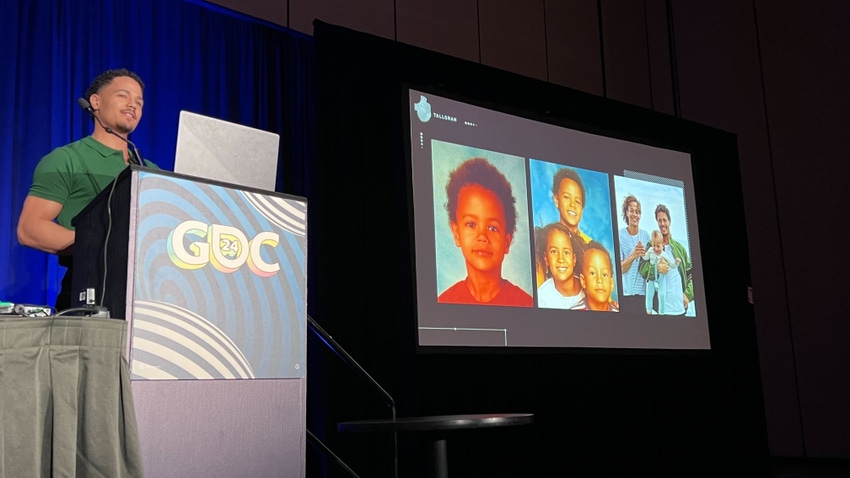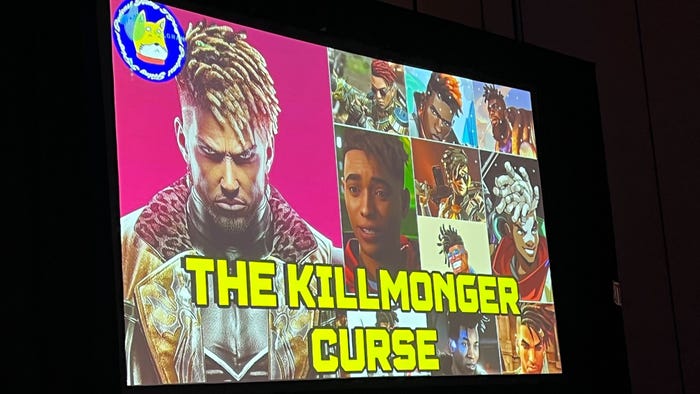
Read More from GDC 2024 | Keep up with the latest game industry event coverage from GDC 2024, including news, talks, interviews, and more from the Game Developer team.
Why is Black hair so difficult for video games to get right? This 3D artist explains
Tallgran CEO Isaac Olander breaks down the challenges of proper representation in games, and what developers can do to add authenticity.

At GDC 2024, Isaac Olander, CEO and art director at Swedish-based studio Tallgran, gave a panel on the current state of representation for Black characters, with a particular focus on why Black hair continues to be a tricky thing to nail for games. Having produced 3D models for titles like League of Legends and Insomniac Games' Spider-Man series, Olander's work emphasizes authenticity and showcasing style and personality—with the assertion that having both is indeed possible.
Representation has been an important topic for the games industry, most especially in recent years thanks to Diversity, Equity, and Inclusion (DEI) initiatives and agencies like Sweet Baby Inc. offering guidance for developers. Even as people of color represent a sizable portion of the global gaming audience, modern video games still struggle to convey an authentic view of characters from different cultures accurately. Games are in a far better place now than they were in previous decades when it comes to representation, however, Olander's panel highlighted that even now, more work has to be done to do right by the diverse gaming audience.
Getting that hair just right
One of the key areas that Olander highlighted in his talk was the necessity of authenticity when it comes to hair for Black characters in games. For Olander, who grew up in Gambia, West Africa, one of the most significant games to get Black hair right during his youth was Grand Theft Auto: San Andreas. At the time, it was a significant breakthrough for Rockstar Games' focus on offering a large and living world to explore freely—and having a Black protagonist as the lead was a breath of fresh air, especially with the fact that you could customize his design and give them looks that felt authentic to the early 1990s time period the game was set in.
"At the time, we didn't really feel represented in Western media—or in Swedish media for that matter [in my case]," said Olander. "This all changed for me when I played GTA San Andreas, it was the first time I played as a Black protagonist, which was amazing. CJ is very cool, and he also had three different hairstyles [that stuck out for me]—a buzzcut, an afro and cornrows."
"All of these were hairstyles that I had grown during my youth, and so it was actually the first time I, for one, felt represented, and two, that my hair was normal, like how I felt growing up in Gambia," he continued. "Of course, this looks a bit outdated now, but we have to remember that at the time, GTA was really at the forefront of console gaming, not just a representation of that here in general, but they will be at the forefront of creating accurate human characters. And in that sense, Rockstar were truly rock stars; they were only limited by the technical limitations of the time as for many game companies."
That's why Olander believes authenticity is an important facet for getting PoC characters and their experience right for games—it allows the audience to feel a special kind of connection to the game, especially when media often leaves these experiences to the sidelines or just doesn't get it right at all when it tries. According to Olander, getting accurate Black hair in games is still so difficult due to technological constraints and a lack of developers or consultants on the team who have a connection to that community.

Image via Alessandro Fillari.
Why game devs love "The Killmonger"
In recent years, there has been a clear push for Black characters in games to feature more realistic and culturally appropriate hairstyles and personalities. Generally speaking, there has been a thoughtful approach to having more authentic Black hairstyles—Insomniac Games' Spider-Man and its focus on Miles Morales and the Harlem community being solid standouts. Unfortunately, many developers have recently honed in on one hairstyle for Black characters, and it's become something of a worrying sign for audiences—and that's the "Killmonger" haircut.
Popularized by Michael B Jordan's character in the Marvel film Black Panther, the Killmonger is a Black hairstyle that features forward swooping short dreads on one side of the head and usually a taper fade to round out the look. In isolation, this is a slick and very cool haircut that blends a modern style while showing a connection to the African diaspora. The issue with the look is that many developers have leaned heavily into it and have turned it into the hairstyle for Black characters, and it's been overused in recent years.
This focus on one hairstyle shows a very narrow insight into Black hairstyles, which ultimately contradicts the end goal bringing in a more authentic view of the Black experience and culture. According to Olander, one of the reasons why developers have leaned into this style is largely due to technology.
"It's really interesting to think about: why do so many games have this hairstyle? Why don't we see other types of hairstyles? There's a smorgasbord—as we say in Sweden—of hairstyles to pick from," said Olander about the Killmonger. "But, you know, from a developer point of view, I see it as a quite simple hairstyle to approach from a technical standpoint."
"It's already been working in games, and it's been accepted as something authentic, and for many game companies, this means that it's an efficient hairstyle that's been proven to work," he said. "But what we do see is that many games use this hairstyle, but they might not know how to make other various hairstyles to go along with that option. Furthermore, there's a lack of access to diverse dev teams who can help guide the proper implementation into those games."
During the panel, Olander shared an instance where he struggled to find tutorials for Black hair during his early days of 3D modeling, which he states is an issue many developers have to deal with when building uncommon hairstyles for games. He explained he had to go to internet forums to find a tutorial video on how to 3D model a certain Black hairstyle, and the only one he could find was in the Mandarin language. This problem also means that the audience won't be able to have the kind of hairstyles that they know—Olander even mentioned how games like The Sims have modders creating Black hairstyles to cater to players who want to see different looks that the devs don't have in the base game.

A slide depicting different hair textures. Image via Alessandro Fillari.
What's being done to make things better
To offer more help combating the lack of access to resources and detailed documentation, Olander and other artists came together to produce a guide called Code my Crown, a free-to-use explainer that gives 3D modelers and artists a walkthrough into understanding how to produce Black hair for games.
Made in partnership with Dove and the Afro Hair Library, Code my Crown is a great resource that can give developers more insight into making Black hair more real and authentic—and according to Olander, the response to Code my Crown has been overwhelmingly positive across the industry.
"The result from this initiative has been amazing. People love it, and I think we're finally seeing that without the cost of a change in this industry," he said. "I'm very excited about what's to come, and we're now at the point where we can start accurately representing real life in different ways for these games. My hope for the future is that we can start moving away from that struggle of just trying to get things right, and we start looking at things more creatively. Like, how can we creatively show black hairstyles in ways that are only possible in games?" With the rise of better access to resources for devs thanks to DEI initiatives and developers looking to make change, the long-term hope is that studios across the world will be able to showcase more authentic characters in their games with looks that reflect a bit of the larger world in a more positive and real way. For the audience, especially PoCs, seeing a bit of ourselves in the game can go a long way in connecting with the games they enjoy spending time with.
Game Developer and GDC are sibling organizations under Informa Tech.
About the Author(s)
You May Also Like









